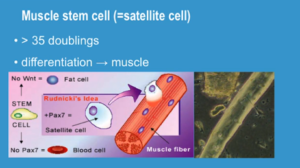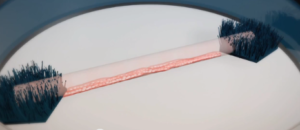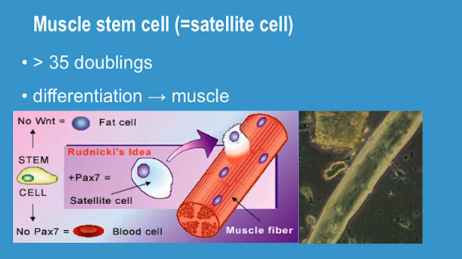Dr. Mark Post, head of physiology at Maastricht University, will debut the first stem cell burger the world has ever seen this Monday. Why? Dr. Post breaks down the theory and goals behind this lab-grown hamburger in his TEDTalk talk below. However, for those of you who do not have the 20 minutes to watch, we have attempted to explain his interesting theory in this post.
Dr. Post explains in the video how inefficient meat production is. He claims that pigs and cows never went through an evolution to become dinner for us, and therefore they are very inefficient. For every 15 grams of meat we eat, we have to feed these animals 100 grams of vegetable proteins, making their bioconversion rate 15%; and livestock is currently using 70% of our arable lands in the world.
It is predicted that meat consumption will double by 2050. In addition to this problem of quantity, Dr. Post also mentions the fact that these animals excrete large quantities of methane and carbon dioxide. In fact, he states, 20% of all greenhouse gases come from livestock.
Dr. Post walks through the deconstruction of a cow, starting with a biopsy of the muscle. He notes that in cow muscles exist very tiny stem cells, known as muscle stem cells, which serve the purpose of repairing the muscle when needed (see photos). These stem cells can multiply, and Dr. Post states that from just one stem cell, 10,000 kilos of meat can be made.

Muscle Stem Cells
These stem cells are special, Dr. Post says, because they not only multiply but they merge. When placed in a petri dish with anchor points like a piece of Velcro, they will merge and stretch to form a muscle (see photo) and ultimately stretch themselves out to create muscle fibers. You can create one hamburger with 20,000 of these muscle fibers, which is exactly what Dr. Post’s group has done.

Muscle Stem Cells Stretching
While they are still improving the efficiency of their stem cell culture methods for this process and working out some of the details, like ensuring the color of the meat is accurate, they have made amazing progress. Dr. Post envisions a future where people are growing hamburgers in their own kitchens after purchasing small packets of stem cells. He also envisions the ability to lab-grow steaks and pork chops as well.
We found this article inspiring because it shows that not only are stem cell scientists creating hope and finding cures for terrible diseases, but as Dr. Post shows, they are also finding uses for stem cells that reduce our carbon footprint. Dr. Post says that if this process becomes efficient, in 20 years, it will cost four times more to buy a typical hamburger because of the scarcity of the cows. Amazing.
Stem cell scientists how do you feel about meat products being produced in the lab?
If you enjoyed this post, please consider subscribing below to our monthly newsletter through which we provide stem cell scientists information on the most current research topics and tools to help them constantly improve their stem cell culture experience.
To Successful Research,
StemCultures
Information for scientists by scientists on all things related to stem cell growth including stem cell culture, culture medium, tissue culture, fibroblast growth factor (fgf2) and more.
Note: StemCultures facilitates posting on this blog, but the views and accounts expressed herein are those of the author(s) or interviewee(s) and not the views or accounts of StemCultures its officers or directors whose views and accounts may or may not be similar or identical. StemCultures, its officers and directors do not express any opinion regarding any product or service by virtue of reference to such product or service in this blog.
